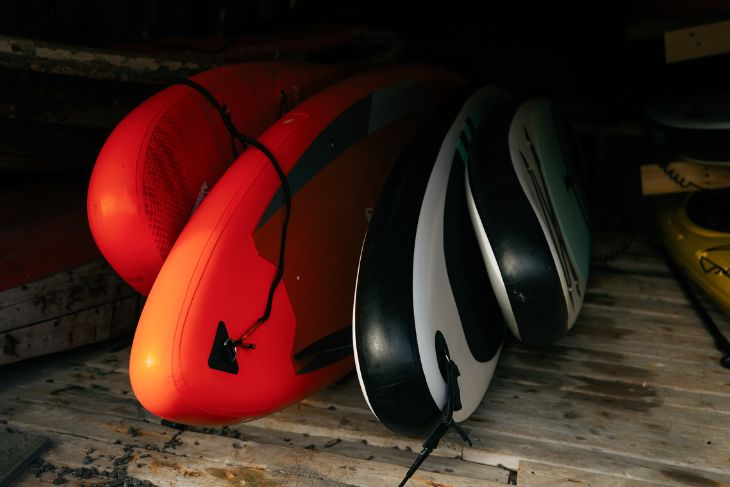Sheds are great for storage, but they can hold more than just garden tools.
If you’re raising a family of budding athletes or need a place to store your equipment until your next game, you know what it’s like to have a shortage of space.
This guide will walk you through setting up your shed to store sports equipment, so you can keep having fun outdoors.
Step 1: Plan Your Storage Layout
It helps to know a few key things about storage sheds before installing one on your property. Planning is crucial before you start tossing gear into your shed.
A well-thought-out layout will save you time and headaches down the road. Make a list of all the gear you want to store. Start with the large items and work your way down to smaller items.
Organizing by zones makes it easier to locate what you need. Reserve one area for items such as bikes and paddleboards that you can hang up or set against a wall. Remember to leave space for a small bench or table to adjust equipment or make repairs.
Step 2: Install Durable Storage Solutions
Once you know what you’re storing, it’s time to invest in storage that keeps everything secure and within reach. Consider overhead racks for seasonal or less frequently used items such as snowboards. These racks free up floor and wall space while keeping your shed uncluttered.
Transparent or labeled stackable bins make organizing and finding small pieces of equipment a breeze. Use these storage solutions for soccer balls, basketballs, frisbees, and other loose items that might otherwise roll around.
Remember, metal or plastic shelving can support heavier weights and withstand extreme temperatures better than wood.
Step 3: Organize by Season and Use
Arrange your equipment by season or frequency of use to make your shed even more functional. Place items you’ll need for your current sports season within easy reach and rotate them as seasons change.
Keep hockey sticks and snowboards accessible in winter, and move summer staples, such as bikes and fishing rods, closer to the door during warmer months.
Frequently used gear, such as soccer balls or bike helmets, should always be within arm’s reach, while off-season equipment can go on higher shelves or in less accessible areas.
This thoughtful arrangement will save time and hassle during busy mornings or spontaneous game days.
Step 4: Maintain Equipment-Friendly Conditions
Sports equipment often comes with unique care requirements, especially items made of leather, rubber, or sensitive electronics, such as GPS watches. Keep these tips in mind to protect your gear and ensure it stays in good condition throughout the harsher seasons.
Use a dehumidifier or moisture-absorbing packs to reduce the potential for rust on metal parts or mold on fabric items. Insulate your shed or strategically place equipment sensitive to extreme temperatures.
Additionally, consider adding rubber mats or plywood to prevent moisture or uneven ground from damaging gear you store directly on the floor.
Making Outdoor Fun Effortless
Setting up your shed to store sports equipment keeps your gear safe and accessible while simplifying your day-to-day life.
These tips will ensure everything has its place, whether you’re heading out to a weekend game or storing gear for the off-season.

